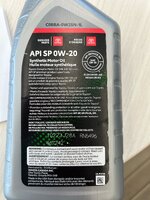I just did my first oil change on a new LC250 at ~1200 miles. The oil had a distinctive gasoline smell and when shining my headlamp on the oil as it drained I could see tiny, shiny particles suspended in the oil. I checked the oil filter and dip stick, both had a faint smell of gasoline as well.
I've already scheduled a time slot with Toyota for them to look at it. My expectation is that this is abnormal but exactly how abnormal is this? Is this something I should really push the Toyota dealer to diagnose and resolve?
In the event that Toyota needs to keep the vehicle for several days, can I postpone that service until next week to take it on a long road trip this weekend without hurting the vehicle?
I've already scheduled a time slot with Toyota for them to look at it. My expectation is that this is abnormal but exactly how abnormal is this? Is this something I should really push the Toyota dealer to diagnose and resolve?
In the event that Toyota needs to keep the vehicle for several days, can I postpone that service until next week to take it on a long road trip this weekend without hurting the vehicle?





